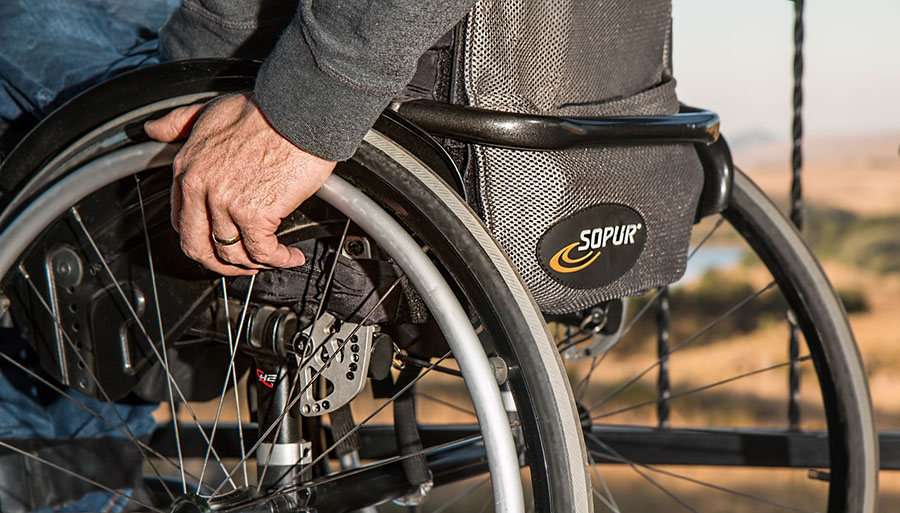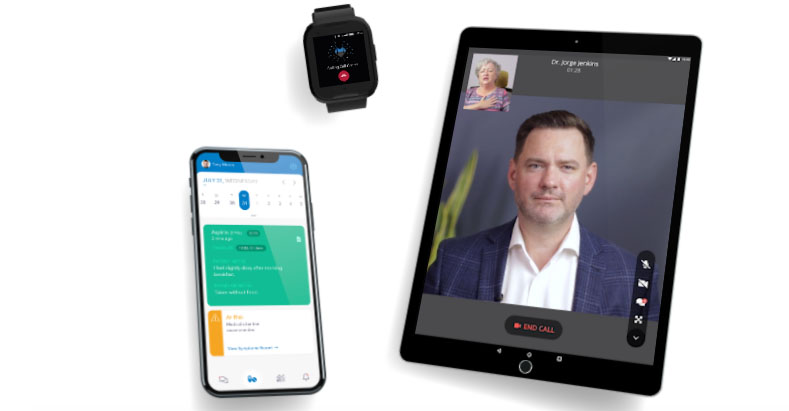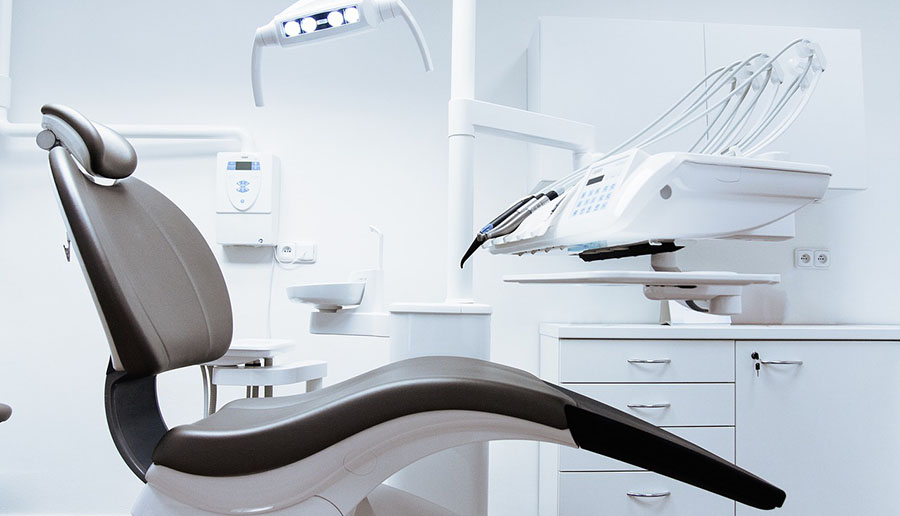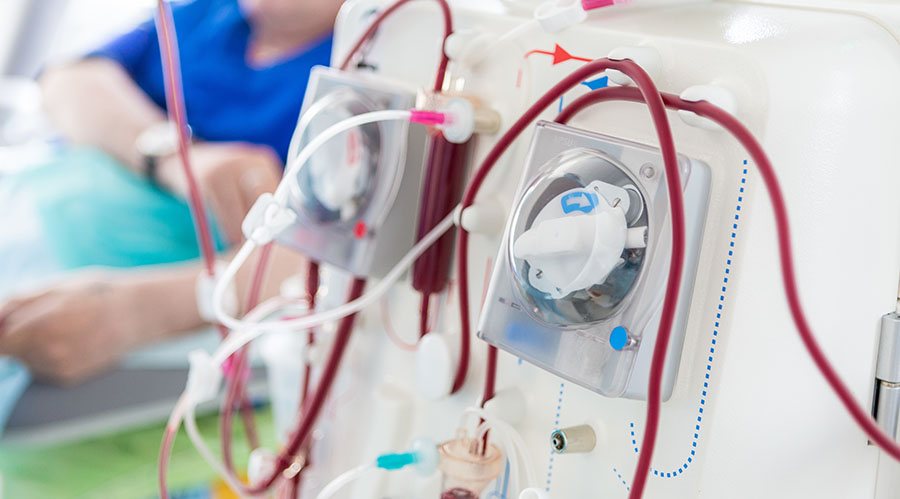The Life Sciences Report: What is the structure of the national physical therapy market?
Steven Davidson: Physical therapy is a $31 billion ($31B) market. During the last 20 years, the sector has steadily experienced a 6% annual growth rate. One reason for the growth is that baby boomers are getting older. But in addition to that, there is a strong national trend toward evidence-based medicine. The market is sorting out what types of services provide the best value for the dollar. Studies report that rehab is a cost-saver, especially when compared to surgery and other procedures. For example, early therapeutic intervention for workers' compensation claims saves as much as 79% of the cost versus waiting before starting rehab. These quantifiable outcomes bode well for the financial health of the industry.
TLSR: What is the acquisition history of your company, Agility Health Inc. (AHI:TSX.V)?
SD: Physical therapy has long been a fragmented industry. Even today, the top four players represent only 9% of the overall market. Agility Health started in 1968. In 2003, my business partner and I engineered a management buyout. We self-funded acquisitions until 2010, then we took on some leverage to do eight buys. One of our two key growth strategies is to continue to acquire small- to medium-size outpatient clinic groups with two to four clinics. That is our sweet spot: It is big enough to be meaningful, but too small for the much larger players. We tell the clinic groups that we will buy a super majority of the business. "We want you to continue to manage it," we tell them. "And we will absorb human resources, revenue cycle management, IT services, practice management software and accounting functions."
TLSR: What is your other key growth strategy?
SD: Our other key strategy is to target organic growth in our hospital business line. Partnering with hospitals in joint ventures is a big part of our strategy. We are talking with three hospital systems right now about collaboratively managing their hospital services. We also have a proprietary software system designed to manage hospital-based rehab businesses. That software, combined with our management expertise, improves the quality of service and overall performance metrics for all our clients.
TLSR: What portion of the outpatient business is workers' compensation-related?
SD: Worker's comp is less than 10% of our business. Most of our accounts receivable are for traditional insurance product—health management organizations, preferred provider organizations. About 20% is Medicare.
TLSR: Has the Affordable Care Act impacted your sector?
SD: It has generally affected our space positively. The Affordable Care Act has quietly improved healthcare access for some folks who did not have such access in the past. It has also reinforced the evidence that rehab is a service that is required for all insurance plans.
TLSR: What makes Agility Health unique in your industry?
SD: Most of our competitors stick to providing just one or two service lines. For example, U.S. Physical Therapy Inc. (USPH:NYSE) sticks to outpatient clinics and industrial rehab. Kindred Healthcare Inc. (KND:NYSE) sticks to the nursing home business and outsourcing to hospital and nursing homes. Concentra Inc., which is a subsidiary of Humana Inc. (HUM:NYSE), focuses on occupational medicine and rehabilitation. Agility Health provides all these services and more. We are in the acute care hospital business, outpatient services, senior care, long-term care, orthotics and industrial rehab, not to mention the software business.
When we acquired the company in 2003, our goal was to diversify geographically. Originally, most of our business was in Michigan, and now less than half of it is in that state. Healthcare services in the U.S. are very decentralized and regional. For example, here in Michigan, the system in Grand Rapids is very different from the healthcare environment an hour away in Kalamazoo.
Geographical diversification is like creating a stock portfolio that spreads the risks and benefits over a large space. We provide all these services, and then we tie them together with software and management policies. We are the only rehab company that has developed its own propriety practice management software.
TLSR: Are you putting the proprietary software on the market?
SD: We have just announced that we will begin selling the AgileRPM software service early next year to hospitals and outpatient clinics.
TLSR: Who are your major clients?
SD: In the national hospital business, we work with large providers such as Trinity Health Corp (private). We service a lot of regional healthcare companies. On the industrial side, our long-term clients include Ford Motor Co. and Pratt & Whitney, which is a subsidiary of United Technologies Corp. (UTC:NYSE). We have American Airlines Group Inc. (AAL:NASDAQ) and Medtronic Inc. (MDT:NYSE). In the orthotics business, we are the exclusive provider for the Women's Tennis Association, for which we make handcrafted orthotics.
TLSR: Do you contract directly with Ford?
SD: Like many large corporations, Ford Motor is self-insured. We have physical therapists located inside Ford's plants who provide direct rehab services in their assembly facilities. We provide a broad range of preventative and rehabilitation services for our manufacturing clients. We provide ergonomic assessments, early intervention on injuries, and coaching on how to do the job properly without getting injured. Our goal is to reduce the number of workers' compensation claims and promote good health practices.
TLSR: Are you taking on debt to support your revenue growth curve?
SD: We have taken on debt to support acquisitions, as well as a bit of equity. Moving forward requires a combination of debt, equity and internal cash flows. We went public last October to accelerate growth. This created an opportunity for us to reward our 1,100 employees with a stock purchase plan and managers with stock options. Our clinicians are our key asset. It is smart to provide them with stock options and stock bonus incentives.
TLSR: What was your operating revenue last year?
SD: Our revenue in 2013 was $63 million ($63M).
TLSR: Are you operating at a net profit?
SD: We are EBITDA (earnings before interest, taxes, depreciation and amortization) profitable, but not yet net income profitable, which is a near-term goal, of course. Our adjusted in 2013 EBITDA was roughly $3M.
TLSR: Are you going to continue to make acquisitions to grow revenue?
SD: Our target is to grow revenue by 25% per year, with roughly 20% of the 25% through acquisitions of small outpatient clinic groups. Each acquisition has its own twist, but we look to finance a buy with a combination of 50–60% cash and the balance in vendor take-backs or seller debt. We are looking to acquire clinic groups in the 4–5X range on a multiple of trailing 12 months EBITDA.
TLSR: Do you structure acquisitions as partnerships?
SD: Our goal is to partner with sellers. These entrepreneurs retain 20–30% as a synthetic or real equity for three to five years.
TLSR: Is there a limit to Agility's growth?
SD: Our goal is to become one of the largest physical therapy operators in North America.
TLSR: Who are your main competitors?
SD: U.S. Physical Therapy is New York Stock Exchange-listed. It is the best pure-play rehab comparable for a public company. Select Medical (SEM:NYSE ) is the largest provider of rehab in the country, with numerous hospital assets. Gentiva Health Services Inc. (GTIV:NASDAQ) provides predominantly post-acute healthcare. Kindred Healthcare is one of the more aggressive acquirers. It is in the long-term care and the post-acute care business. It also has substantial nursing home assets. On the whole, there is a very dynamic and competitive acquisition market. Unlike resource stocks, macroeconomic events do not generally affect our industry.
TLSR: Is the corporate future of physical rehab emerging from these acquisitions, or will there still be a majority of mom-and-pop operations?
SD: There is more consolidation now than there has been in the past. Running a rehab clinic is becoming more difficult. Fewer people are jumping into the industry. There is a lot of private equity money in the space. There is no single emerging leader; everybody wants to consolidate to grow.
TLSR: How has Agility Health's stock fared since your initial public offering?
SD: We came out at $0.20/share. We peaked at $1/share. We are at about $0.20/share today. Our business management team and our directors are very bullish. A number of us have been actively buying our own stock. It is at a good value, and we are all quite positive about the long-term prospects.
TLSR: As you continue to make acquisitions, will there be splits in the stock?
SD: Because we are a growth company, most of our energy is focused on creating shareholder value and reinvesting.
TLSR: What catalysts could put you into the net income profitability?
SD: We are aggressively shifting our energy toward our higher margin business lines. Our second quarter was 10% EBITDA over revenue, and our long-term vision is to be over 10%. We have been reengineering within the organization to improve our overall margins, by acquiring high-margin businesses and picking up high-margin contracts.
TLSR: Where would you like to be in five years?
SD: I see Agility Health with revenue of $100M within a year or two, and $300M within five years.
TLSR: What business weaknesses do you need to address to get to that goal?
SD: We need to make sure that we aren't capital-constrained. That is one reason why we went public. We aim to keep our executive talent, adding more of that talent as we grow by acquiring organizations that share our corporate culture.
TLSR: How do you describe your corporate culture?
SD: Our culture is a major asset. We started with one therapist in 1968. Our managers are clinically oriented, with strong healthcare backgrounds. Our clinical focus makes us unique in the rehab marketplace. People looking to sell their clinical businesses tend to migrate toward our strong, clinically based culture because they are comfortable with our priorities.
TLSR: Thank you, Steven.
SD: You are welcome.
 Steven Davidson is CEO of Agility Health, where he directs the company's care delivery and quality initiatives, financial performance and strategic acquisitions. Davidson has served as CEO since 2003, when he and partner Ken Scholten led the management buyout of Agility Health's predecessor, GNA. Davidson's 14-year tenure at GNA included a series of leadership positions covering regional business development. Davidson has also served in leadership roles at Health East Corp. and PT Management Consultants, where he provided specialized rehabilitation consulting and contracting services to nursing homes and hospitals across a five-state region. Davidson is a licensed physical therapist and member of the American Physical Therapy Association. He earned a bachelor's degree in physical therapy from the College of St. Scholastica and a master's degree in business administration from the University of Chicago.
Steven Davidson is CEO of Agility Health, where he directs the company's care delivery and quality initiatives, financial performance and strategic acquisitions. Davidson has served as CEO since 2003, when he and partner Ken Scholten led the management buyout of Agility Health's predecessor, GNA. Davidson's 14-year tenure at GNA included a series of leadership positions covering regional business development. Davidson has also served in leadership roles at Health East Corp. and PT Management Consultants, where he provided specialized rehabilitation consulting and contracting services to nursing homes and hospitals across a five-state region. Davidson is a licensed physical therapist and member of the American Physical Therapy Association. He earned a bachelor's degree in physical therapy from the College of St. Scholastica and a master's degree in business administration from the University of Chicago.
Want to read more Life Sciences Report interviews like this? Sign up for our free e-newsletter, and you'll learn when new articles have been published. To see recent interviews with industry analysts and commentators, visit our Streetwise Interviews page.
DISCLOSURE:
1) Peter Byrne conducted this interview for Streetwise Reports LLC, publisher of The Gold Report, The Energy Report, The Life Sciences Report and The Mining Report, and provides services to Streetwise Reports as an independent contractor. He owns, or his family owns, shares of the company mentioned in this interview: None.
2) Agility Health Inc. paid Streetwise Reports to conduct, produce and distribute the interview.
3) Steven Davidson had final approval of the content and is wholly responsible for the validity of the statements. Opinions expressed are the opinions of Steven Davidson and not of Streetwise Reports or its officers.
4) The interview does not constitute investment advice. Each reader is encouraged to consult with his or her individual financial professional and any action a reader takes as a result of information presented here is his or her own responsibility. By opening this page, each reader accepts and agrees to Streetwise Reports' terms of use and full legal disclaimer.
5) From time to time, Streetwise Reports LLC and its directors, officers, employees or members of their families, as well as persons interviewed for articles and interviews on the site, may have a long or short position in securities mentioned. Directors, officers, employees or members of their families are prohibited from making purchases and/or sales of those securities in the open market or otherwise during the up-to-four-week interval from the time of the interview until after it publishes.




























































